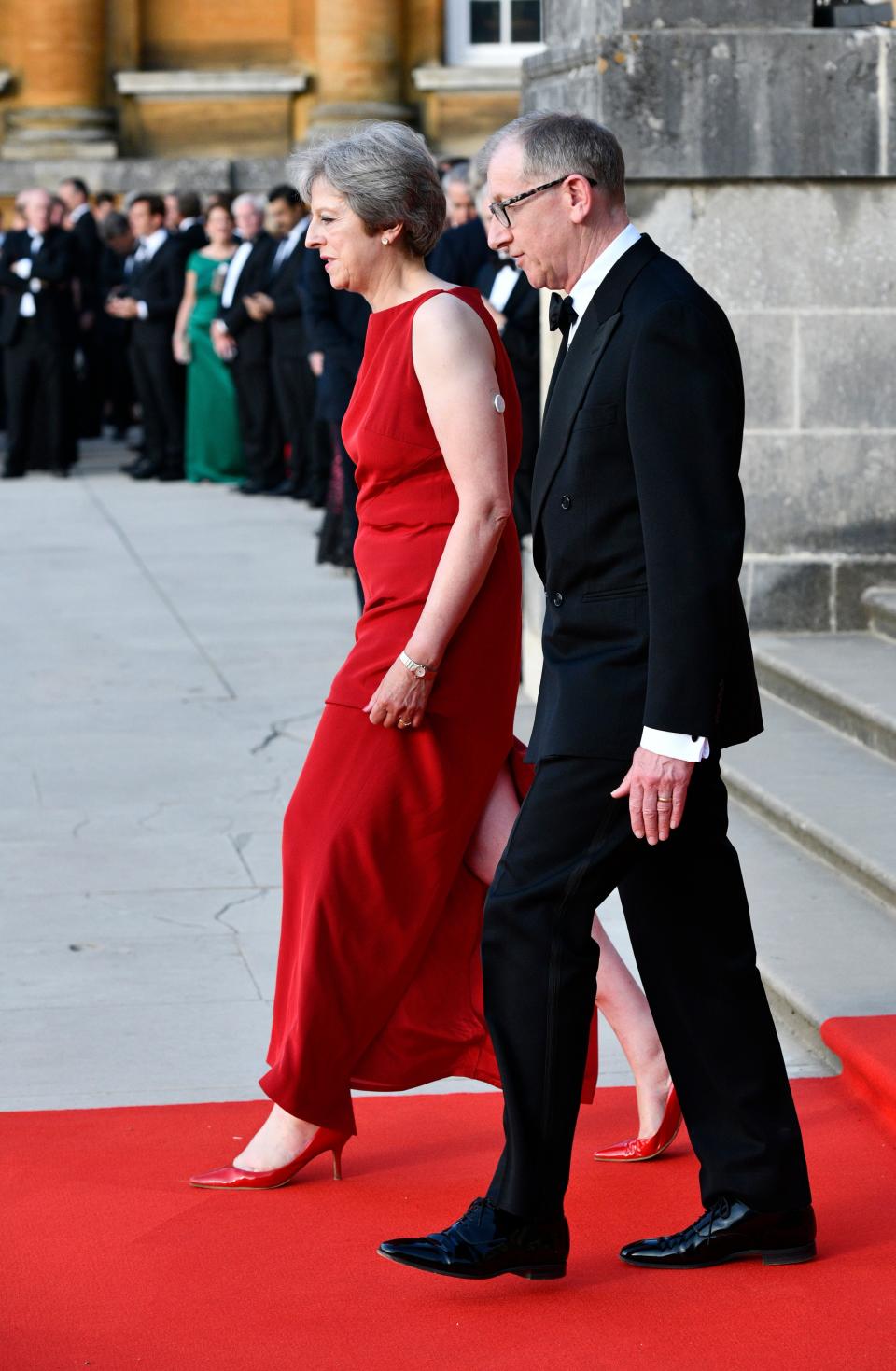Why Theresa May wore a diabetes monitoring patch when she met Donald Trump

Theresa May wore a diabetes monitoring patch when she met US President Donald Trump on his official visit to the UK.
The white circular patch was spotted on her upper left arm as she met Mr Trump as he began his four-day controversial trip.
The leaders were meeting at Blenheim Palace, Oxfordshire, for the highly contentious visit which has sparked large protests in London and been hit by claims Mr Trump has undermined the British leader over the issue of Brexit, though he has subsequently denied this.
The monitor is used by people with diabetes to find out what their sugar levels are.

If it is placed on the back of the arm, like Mrs May did, a tiny filament goes through the upper level of the skin to monitor sugar levels.
The patch then delivers the results to a digital reader, which allows a diabetes sufferer to know how much sugar is in the system.
That could mean the patch wearer will then know whether or not to inject themselves with insulin.
It is a recent invention, only being fully developed and available by 2016.
The Prime Minister was diagnosed with diabetes back in 2013, which she described as a ‘real shock’ at the time.

She has Type 1 diabetes, a serious, lifelong condition.
Around 10 per cent of all diabetes sufferers in the UK have Type 1 diabetes. It is not caused by diet or lifestyle, though it is unclear what exactly causes it.
It is predicted that by 2025, some five million Britons will have been diagnosed with diabetes.
Most sufferers will have Type 2 diabetes, which is usually spotted in people over the age of 40, or 25 if people are Afro-Caribbean, Black African or South Asian, says Diabetes UK.

 Yahoo News
Yahoo News 

